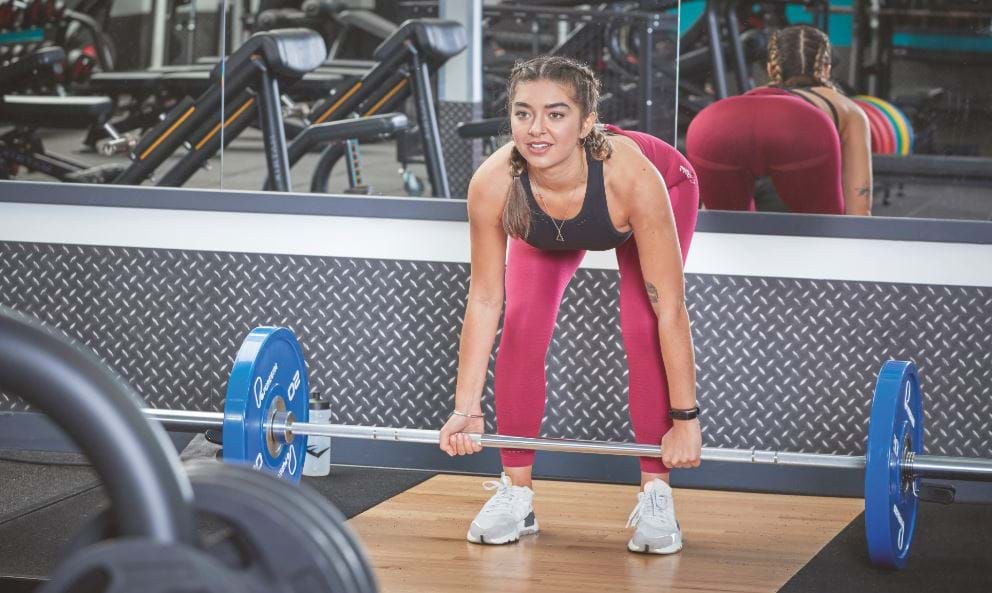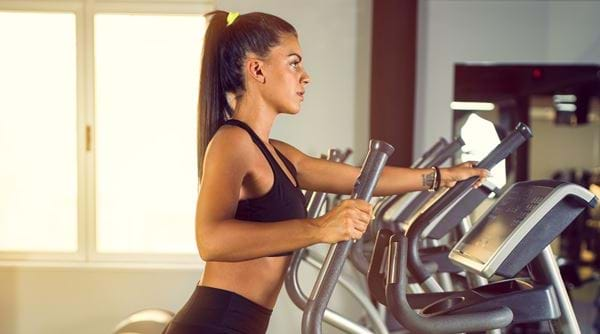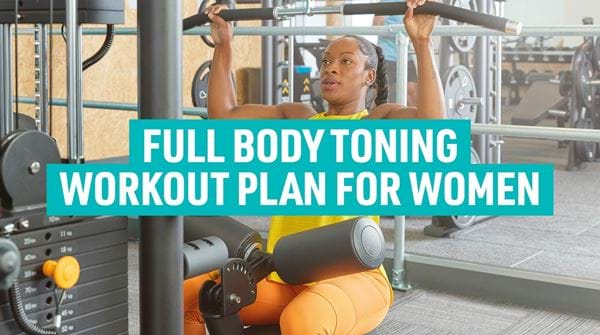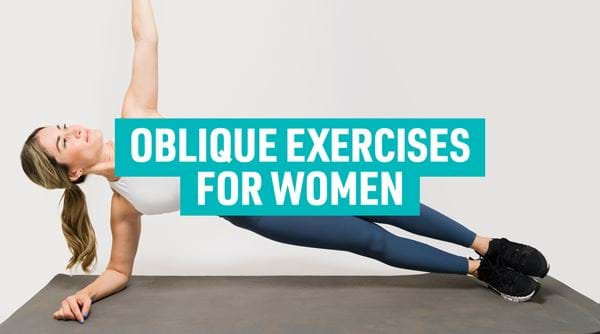7 of the Best Back Exercises & Workouts for Women

Did you know that there’s a host of back and spine-related issues that are more prevalent in women than men? This includes lower back pain, spinal osteoarthritis and more, and the risks can get higher as females get older, particularly at post-menopausal age.
This is why it’s incredibly important for women to include back exercises in your weekly workout routines. Not only are you boosting strength and helping to tone the shape of your back, but you’re also helping to keep your muscles in good condition and your spine supported as you age.
Here we’re showcasing some of the excellent benefits back workouts have for women, as well as some of our favourite moves to keep in shape.
What muscles are in the back?
Your back muscles are some of the largest muscles in your whole body, split between:
- Latissimus dorsi (lats) - helps with movement of the shoulder joint and moves the arms around the sides and behind the body
- Rhomboids - help to squeeze the shoulder blades together and down
- Trapezius - also help to move the shoulder blades together and down, but also to raise and rotate them
- Erector spinae - good for posture, keeping our back extended and upright, and our bodies stabilised
What are the benefits of back exercises for women?
There are a number of back or back-related conditions women are more susceptible to developing, particularly once passing menopausal age. Issues such as sacroiliac joint dysfunction, which can lead to lower back pain, or spinal osteoarthritis, which can cause stiffness and pain, are more common due to the makeup of the female body and the changes you experience as you age, such as hormonal shifts, pregnancy, childbirth or weight gain.
So, needless to say, there are plenty of great reasons to keep your back muscles strong and healthy.
Key benefits to note include:
- Spine strength: in women, the lumbar spine is designed to support the uterus during pregnancy, so it’s more stable, but less mobile than men’s, increasing the risk of fractures for females. Activities that put stress on the spine can increase the chances of injury or even a broken bone, particularly post-menopause. Strengthening the muscles that hold the spine straight and upright will help to keep this area limber and flexible
- Better posture: with stronger back muscles, you’ll be more likely to sit and stand upright - it just feels easier as these muscles will remain more active and engaged, helping us to maintain a straighter posture more easily. This keeps your body aligned and puts less pressure on your spine and ligaments.
- Increasing core strength: Your core and back are closely connected, often working together to support and move your body. Working on your back will improve your core strength and performance.
- Extra stability: weak lower back muscles and poor posture mean your body may rely on other, less effective muscles for stability, which in turn can cause injury. A strong back and core is more likely to boost your balance and stability while minimising the risk of back pain.
- Boosting metabolism: by increasing muscle mass, you’ll also be improving your resting metabolism, helping to burn more calories and control your weight a little more easily.
Which exercises are best for women’s back workouts?
1. Conventional Deadlifts
If deadlifts aren’t already a part of your workout routine, then you’re missing out. These are compound exercises that give a full body workout and are an excellent way of boosting core and lower back strength. Plus, it’s also incredibly satisfying to lift heavier weights as you improve. This does require some weighted equipment - usually a barbell, but these can be done with dumbbells or kettlebells.
Our How to Deadlift guide explains this exercise in more detail, and Is It Time to Deadlift highlights even more fantastic benefits from this strength building move.
2. Bent Over Row
An excellent back workout, bent-over rows are another compound exercise that are particularly great at targeting your lats and rhomboids, whilst also strengthening your shoulders, forearms, core and lower body.
- Ensuring your barbell is loaded with an appropriate weight, stand with your feet around shoulder-width apart and knees bent
- Leaning forward from the waist and keeping your back, take a hold of the bar a little bit wider than shoulder width apart so your fingers and palms are facing down
- Engage your core and squeeze your shoulder blades together as you ‘row’ the barbell up towards your sternum, making sure to drive your elbows behind you
- Ease back to starting position before repeating
Note: pulling the weight higher to your chest focuses on your upper back muscles, while pulling it closer to your waist will target your mid-back muscles.
You can also complete these using dumbbells, just by keeping one in each hand. Check out our How to Do Rows guide for more advice on these and other forms of row exercises.
3. Lat Pulldown
Lat pulldowns are often considered to be the back builder, perfect for targeting your lats and boosting upper body strength. If you’re interested in working your way up to pull ups, these are an excellent starting point. You’ll need access to the lat pulldown machine at the gym for this move.
- You’ll start by sitting facing the machine, with your hands shoulder-width apart on the straight bar above your head (you may need to stand to pull it down to arms reach) using in overhand grip
- Engage your core, squeeze your lats and pull the bar down towards the top of your chest, driving your elbows down
- Hold for a moment before slowly easing back to starting position
Discover more variations of lat pulldown exercises here.
4. Seated Cable Row
Another movement that will require gym equipment, you’ll need access to your gym’s seated row cable machine for these rows. These movements boost upper body strength by targeting pretty much all the muscles in your back. You’ll need the V-grip attachment on the seated row cable machine, and make sure to have a suitable weight fitted
- Sit on the seat with your knees slightly bent, feet hip-width apart and feet on the footrests
- Take hold of the V-bar with your arms extended and your palms facing in towards one another
- Engage your core and, driving your elbows in towards your hips, pull the bar towards your body, just below your belly button
- Hold for a moment before slowly easing your arms back to starting position. Repeat.
5. Renegade Row (Plank Row)
The renegade row, which is also known as the plank row, is ideal for targeting your upper back and core, helping with anti-rotational strength to boost coordination and balance. You’ll just need a couple of dumbbells.
- With a dumbbell in each hand, position yourself in plank position with the dumbbells parallel to one another. If a full plank is too much of a challenge, you can place your knees on the floor for this move.
- Slightly shift your weight to the left, while keeping your hips and shoulders square to the floor and without letting your body twist.
- Pull your right elbow back, lifting the dumbbell up towards your chest.
- Hold for a few moments before returning to the floor.
- Alternate between the left and right arm.
6. Pull Ups (assisted if needed)
Pull ups are a challenging move that requires a lot of upper body and back strength to perform, and studies show that women are more likely to find these harder than men because they have less muscle mass in their upper extremities. But that doesn’t mean these are impossible! With some training (and even some assistance if required) you should well be able to work your way up to completing pull ups.
You can try pull ups anywhere there’s a high bar for you to use. However if you’re interested in assisted pull ups (which will still have an excellent impact on your upper body and back muscles) then head to the assisted pull up machine at the gym - this provides a knee pad to support you as you pull yourself up. Alternatively, you can loop a resistance band around the bar to create a hanging loop - place either your knees or feet in the band and use this to support you throughout the pull up.
- Stand below the pull up bar
- Place your hands slightly wider than shoulder-width apart on the bar in an overhand grip, so your palms are facing away from your body.
- Engaging your core and upper body, lift your feet off the ground.
- Raise your upper body up towards the bar until your chin is above the bar.
- Hold for a few moments before easing your way back down in a controlled way.
7. Superman (good for lower back strength)
A simple back exercise that you can do easily at home, the superman is good for targeting your lower back muscles, hamstrings, abs and glutes. It’s also a great move for all skill levels, and requires no equipment (apart from maybe a mat to lie on).
- Lie face down on the ground, with your legs straight and your arms stretched above your head on the floor.
- Engage your core.
- Slowly lift your arms and legs around 6 inches off the ground, keeping your eyes facing the floor and your head steady.
- Hold for a few seconds before gently lowering back to the floor.
Discover more exercise inspiration on our workouts for women section or check out our Back Exercises for Beginners guide for more ideas. You can also download the free PureGym app, where you can create a customised training plan for your fitness goals or get involved with our on-demand classes and workouts. Also, consider booking a session with a dedicated Personal Trainer at PureGym - they’re able to offer a wealth of advice for both fitness and nutrition.


